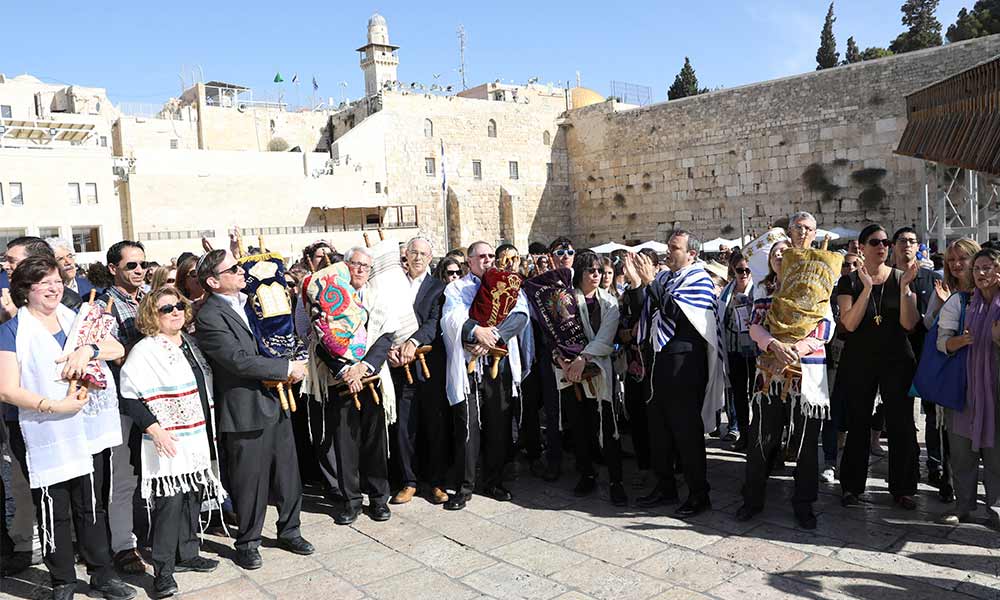How many Reform Jews live in Israel?
The proper answer to this question ought to be: Who cares? And yet some people do care, me included. Orthodox rabbis care because they fear Reform infiltration; pro-Reform activists care because they want the denomination’s fortunes to rise in Israel; I care because of professional interest. Some care because Reform Judaism plays a significant role in Jewish life in America, and its adherents would like it to play a similar role in Israel. Can it succeed? This depends, among other things, on numbers. Hence, the repeated attempts to figure out the number of Reform Israelis.
My latest attempt to do such a thing was part of an ongoing study of Israeli Judaism under the auspices of The Jewish People Policy Institute, of which I am a director. Despite this and another large-scale JPPI study called “Rising Streams” by Dan Feferman, the “streams” in question being Reform and Conservative Judaism, we still can’t figure out the exact number of Israelis who ought to be called Reform Jews.
Numbers matter in politics, and in Israel some religious matters, including this one, are political. If there are no Reform Jews in Israel, or very few, there is less reason to demand official status for Reform as a denomination, a status that would bring with it more state funding and prestige.
Alas, the numbers refuse to tell a coherent story. One study (Pew, 2015) finds few Reform Jews in Israel—about 3 percent, fewer than 200,000 people. Another study (JPPI’s “#IsraeliJudaism,” 2018) finds 8 percent. As usual with polling, the outcome often depends on what question is asked and how. Do respondents “identify” as Reform? Do they “support” Reform? Are they “members” of Reform? Is their synagogue Reform? But it also depends on other things, such as what the other choices are or what mood they are in when the question is posed.
Take, for example, one recent question we asked in a JPPI survey in order to accommodate, as The Times of Israel put it, “a group of Reform and Conservative leaders [who] complained of once again being left off the charts.” The nature of the complaint was a little complicated, but bear with me. In recent years, Israeli polls that deal with Jewish religious sub-groups have attempted to measure them using two types of groupings. In one, we use the traditional terms Israelis commonly use to describe themselves. The answers divide the population into groups such as “secular,” “traditional,” “religious” (Dati) and other categories. Another question is dedicated to “streams” and follows an American-style grouping into Reform, Orthodox, Conservative or no stream.
The complaining rabbis argued that Reform and Conservative should be included on equal footing among the more common categories of Israeli religiosity and not in the more marginal question about streams. In other words, they wanted Israeli Jews to have the ability to choose “Reform” as a category similar to “secular” or “Dati.” Though skeptical, my colleagues and I made the change. The result was yet more confusion, with, possibly, a grain of clarification.
Our approach was to ask two questions, one after the other. The first question included the usual categories of religiosity (totally secular, secular somewhat traditional, traditional, liberal religious, Dati, Zionist-Haredi, Haredi). The second question added Reform and Conservative to that list, while alerting the respondents that more categories are now available for them (totally secular, secular somewhat traditional, traditional, Reform, Conservative, liberal religious, Dati, Zionist-Haredi, Haredi). What happened when the second, expanded list was posed? The needle barely moved. Very few people decided to switch from their original choice, say, “totally secular,” to “Reform” or “Conservative.” The percentage of Reform Jews by this count was less than 1 percent. The percentage of Conservative was 1 percent.
This is a significant discrepancy from our earlier survey, in which we counted 13 percent of Jews in Israel as either Reform or Conservative, a figure that translates to more than 800,000 people—a number justifying Feferman’s contention that “there is significant growth” in progressive Jewish streams. The second survey (by the way, of the same interviewees) that counted fewer than 2 percent of Jews in Israel as either Reform or Conservative translates to maybe 100,000 people—barely a reason for celebration, or for changes in government policies.
Which is it? This question cannot be answered by mathematics, but depends on definitions and expectations. When Israelis are asked about being Reform (or Conservative), their response is inconsistent; the way they decide whether to identify themselves as Reform Jews seems to depend even more than usual on the framework in which the question is posed.
In the course of one year, we asked the same people four times if they were Reform. My colleague Noah Slepkov found that not even one respondent answered this question affirmatively all four times. This suggests that “Reform” is an occasional identity. It may be that sometimes, when they feel like it, Israelis will say they are Reform, but at other times they will say they are “secular” and belong to “no stream.” Why would they even say they are Reform? With the benefit of anecdotal evidence, we are inclined to take a leap and speculate that the reason is mostly political: By saying they are Reform, they establish their antipathy to Orthodox Judaism, and even more so to the Orthodox Israeli establishment.
So is Reform Judaism a religious identity in Israel, or largely a political sentiment that carries no consistent commitment to an ongoing religious practice? The numbers suggest it’s the latter. And that suggestion carries two contradictory lessons. The first is that the Orthodox establishment being rigid and annoying is the main driver of Reform growth in Israel. The second is that the advantage of Orthodoxy will be hard to overcome with Reform troops of such low commitment.
Shmuel Rosner is a senior fellow at The Jewish People Policy Institute and a columnist for the International New York Times and the Los Angeles Jewish Journal.

